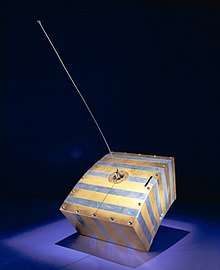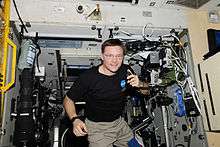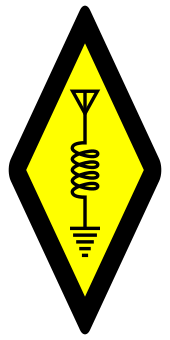Amateur-satellite service



Amateur-satellite service (also: amateur-satellite radiocommunication service) is – according to Article 1.57 of the International Telecommunication Union´s (ITU) Radio Regulations (RR)[1] – defined as «A radiocommunication service using space stations on earth satellites for the same purposes as those of the amateur service.»
- See also
Classification
This radiocommunication service is classified in accordance with ITU Radio Regulations (article 1) as follows:
Radiocommunication service (article 1.19)
- Amateur service (article 1.56)
- Amateur-satellite service (article 1.57)
Frequency allocation
The allocation of radio frequencies is provided according to Article 5 of the ITU Radio Regulations (edition 2012).[2]
In order to improve harmonisation in spectrum utilisation, the majority of service-allocations stipulated in this document were incorporated in national Tables of Frequency Allocations and Utilisations which is within the responsibility of the appropriate national administration. The allocation might be primary, secondary, exclusive, and shared.
- primary allocation: is indicated by writing in capital letters (see example below)
- secondary allocation: is indicated by small letters (see example below)
- exclusive or shared utilization: is within the responsibility of national administrations
- Example of frequency allocation
| Allocation to services | ||
| Region 1 | Region 2 | Region 3 |
135.7–137.8 kHz
|
135.7–137.8
|
135.7–137.8
|
7 000–7 100 AMATEUR
| ||
14 000–14 250 AMATEUR
| ||
18 068–18 168 AMATEUR
| ||
21 000–21 450 AMATEUR
| ||
24 890–24 990 AMATEUR
| ||
28–29.7 MHz AMATEUR
| ||
144–146 AMATEUR
| ||
5 830–5 850
|
5 830–5 850
| |
10.5–10.6 GHz AMATEUR
| ||
24–24.05 AMATEUR
| ||
47–47.2 AMATEUR
| ||
76–77.5 RADIO ASTRONOMY
| ||
77.5–78 AMATEUR
| ||
78–79 RADIOLOCATION
| ||
79–81 RADIOLOCATION
| ||
134–136 AMATEUR
| ||
136–141 RADIO ASTRONOMY
| ||
241–248 RADIO ASTRONOMY
| ||
248–250 AMATEUR
| ||
Additional Amateur Satellite Service Allocations
In addition to the formal allocations in the main table such as above, there is also a key ITU-R footnote RR 5.282 that provides for additional allocations:-
- 5.282 In the bands 435-438 MHz, 1 260-1 270 MHz, 2 400-2 450 MHz, 3 400-3 410 MHz (in Regions 2 and 3 only)
- and 5 650-5 670 MHz, the amateur-satellite service may operate subject to not causing harmful interference to other
- services operating in accordance with the Table (see No. 5.43). Administrations authorizing such use shall ensure that
- any harmful interference caused by emissions from a station in the amateur-satellite service is immediately eliminated
- in accordance with the provisions of No. 25.11. The use of the bands 1 260-1 270 MHz and 5 650-5 670 MHz by the
- amateur-satellite service is limited to the Earth-to-space direction.
Of these, the 435-438 MHz band is particularly popular for amateur/educational small satellites such as Cubesats.
